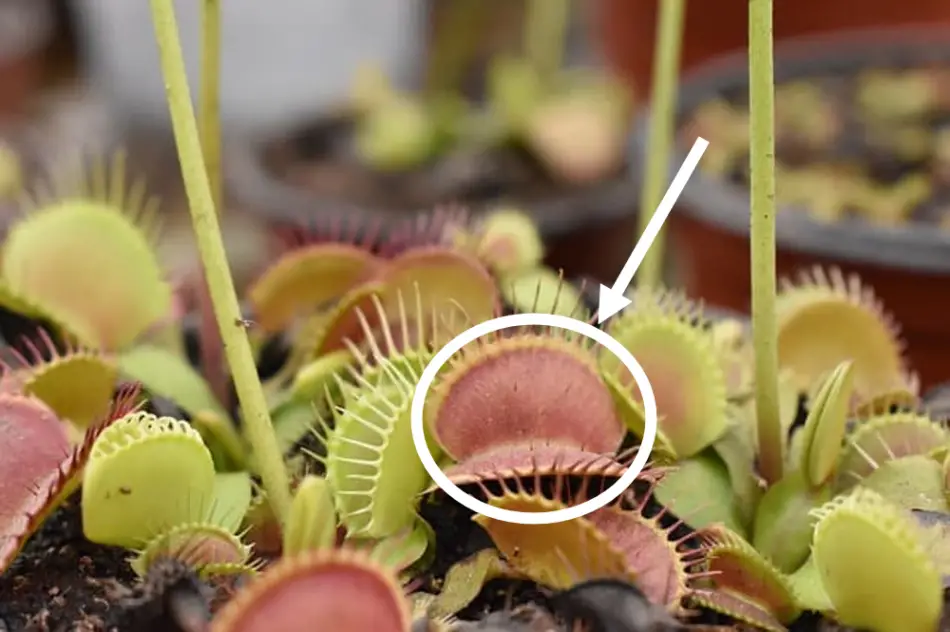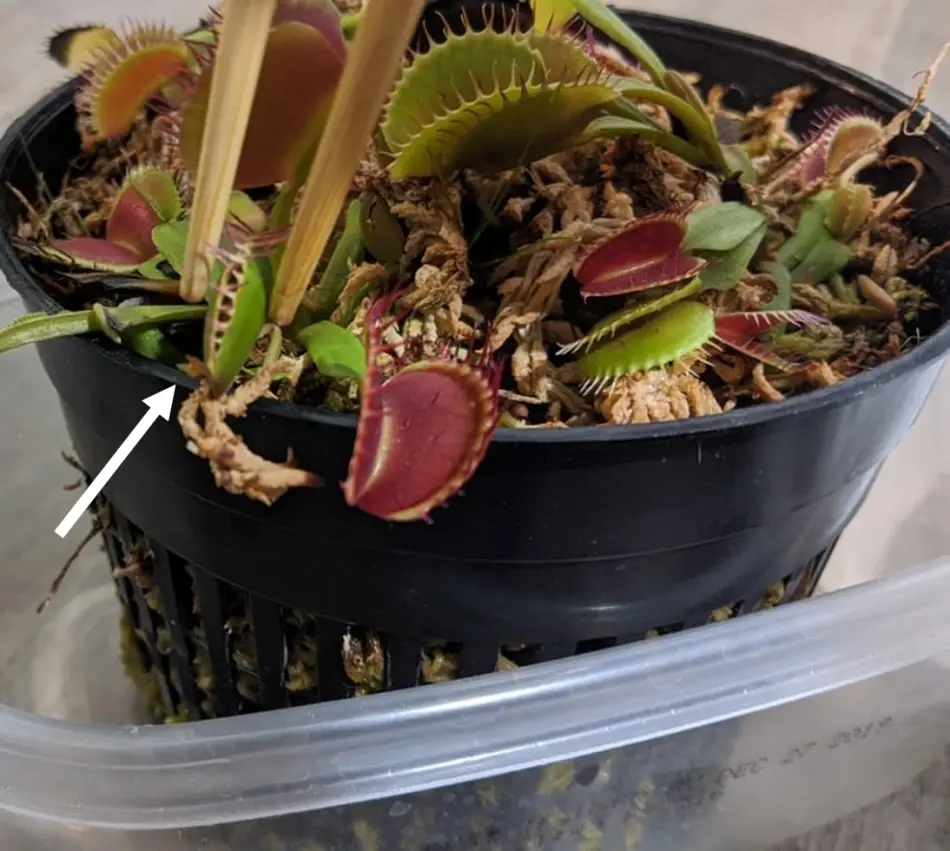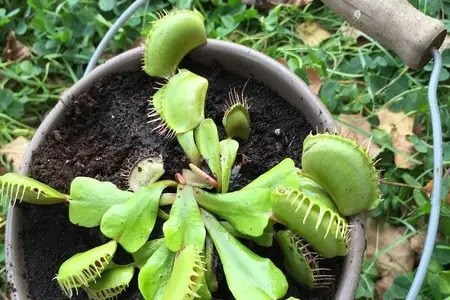When feeding Venus flytraps, there are many different options. Rollie pollies are common insects in most gardens, but are they suitable food for Venus flytraps?
Rollie pollies (pill bugs) are an acceptable food alternative for Venus flytraps. Venus flytraps can consume rollie pollies small enough to fit entirely inside their traps. Still, employing rollie pollies can sometimes cause black leaves due to their hard shell.
This article will teach all the tips and tricks of how to feed roly polys to your Venus flytrap. Also, I will give you some alternatives for other food sources.
Can Venus Fly Traps Consume Rollie Pollies?
Venus flytraps feed on insects and arachnids to acquire key nutrients. Even though Venus flytraps don’t need bugs to survive, they benefit from having a meal every now and then.
Roly-poly bugs can be a good food source for Venus flytraps, as long as some basic considerations are followed:
- The bug must be no larger than 1/3 of the side of the trap. When Venus flytraps struggle to consume a bug, they lose leaves. A general recommendation is always to choose smaller bugs that fit entirely inside a trap when it closes.
- Only employ one bug and feed a single trap of the plant. Then, wait a few weeks before feeding another trap. Feed Venus flytrap only once every 2 to 6 weeks.
- Skip a feeding if a leaf is still consuming a bug.
- Do not feed your Venus flytrap during dormancy. During this resting period, the plant does not need any feeding at all.
Employing roly-poly to feed Venus flytraps have some pros and cons:
Pros for Roly-Poly as Venus Flytrap Food
- Availability: They are available in most gardens.
- Price: they are free; there is no need to purchase these bugs.
- Appropriate size: An adult size roly-poly (5/18 inch) fits inside most traps (1-1.5 inches) of mature Venus flytraps.
Cons for Roly-Poly as Venus Flytrap Food
- Hardshell: Roly-poly bugs have a hard shell, which can be difficult to diggest.
Roly-poly are readily available and of a suitable size to feed Venus flytraps. However, their hard shell can be a challenge. Venus flytraps have difficulties digesting insects with shells. When a plant struggles to consume a bug, it sometimes gives up. Then, the leaf consuming the bug dries up, blackens, and dies.
Employing roly-poly to feed Venus flytraps won’t kill the plant, but it might cause black leaves. When employing insects with shells, monitor the leaves and consider using another bug if the leaves wither.
Depending on your plant’s size and health, you might have a different rate of success employing roly-poly as feed. If you decide to employ them, monitor your plant and verify your Venus flytrap is not struggling to digest the bugs.
The following sections give you an overview of the Venus flytrap feeding process and some alternate food options for Venus flytraps.
The Venus Flytrap Feeding Process
There are two different approaches when feeding roly-poly to Venus flytraps: employing live feed or dead bugs. The processes are quite similar, but the latter includes some additional steps. You can follow the same steps below for other bugs too.
Employing Live Feed
- Select a bug of the right size to feed inside a trap.
- Grab the bug with tweezers or your fingers, and make sure to have full control.
- Drop the roly-poly inside the trap. Aim for the center to activate the trap by touching the trigger hairs in the lobe.
This picture shows the trigger hairs inside a Venus flytrap leaf. There are three thin filaments arranged in a triangular pattern inside each lobe. Those are the trigger hairs that prompt the trap to close due to contact. The trap closes when a bug touches the trigger hairs twice within a few seconds.

- The insect might try to escape, but the motion inside the trap should prompt the lobes to close and trap the prey.
- Continue to observe the bug and the trap. If the bug escapes, you should be ready to capture it and try again.
- Once the bug is inside the trap and is unable to escape, the lobes will close shut. This process might take a few seconds or even a couple of minutes. But eventually, the trap will close completely, and the plant will start secreting digestive enzymes.
- Venus flytraps take several days and up to three weeks digesting a single bug. Do not be surprised if the plant does not reopen until a few weeks later.
Employ Dead Bugs
The process of feeding dead bugs is similar to live bugs but slightly more involved.
- Select a right-sized bug for a Venus flytrap leaf. Consider that when a bug is dead, it is easy to break it up and employ a small piece rather than the whole thing.
- Grab the bug with tweezers or your fingers.
- Identify the trigger hairs inside the leaf.
- Aim for the center and drop the dead roly-poly inside the trap.
- Use your finger or a small tool (paintbrush, tweezer, chopstick…) and touch the trigger hairs inside the trap. Two taps will prompt the lobes to close.
- Once the leaf is closed, you need to provide further stimuli.
- Employ your hands or a soft tool to press both sides of the trap. Tap both sides until the lobes are sealed. It usually takes about 50 taps or a minute of stimulation.
- After stimulating the closed trap, observe it and verify it does not reopen. Sometimes traps reopen when they do not receive enough stimuli.

The video below shows the process of feeding dead bugs to a Venus flytrap. It includes a step to rehydrate the bug, which is only necessary for freeze-dried bugs. I hope this video helps you get a clear idea of how the feeding process works.
For a complete overview of Venus flytrap feeding, make sure to read this article: How to Feed a Venus Flytrap – A Complete Guide with Pictures. The pictures are handy to guide you through the process without making common mistakes.
Alternate Food Options Besides Roly Poly
Besides roly-poly, there are many different bugs Venus flytraps can consume. Generally, Venus flytraps can consume almost any spider or insect out there. Still, there are some very popular food options available for free or for a low price.
Most pet stores carry live or dried up mealworms, bloodworms, or crickets. These three food options are inexpensive and extremely nutritious. I prefer to buy dried up insects because they can be stored for a long time. I can buy a container with hundreds of mealworms for less than 12 dollars, and it can last for years. In terms of nutrition, live bugs do not provide many added benefits. Choose between live or dead bugs depending on your feeding process preference. For example, some people hate handling live bugs and prefer the dried up options.

Gnats, flies, and ants are also common food options for Venus flytraps. These three bugs hoover around most homes and gardens. They are commonly small enough to fit inside most Venus flytraps. However, they do not provide much nutritional value compare to bloodworms and cricket. The soft tissue for a small fly, ant, or gnat is tiny. Personally, I try to place my venus flytraps in windowsills or outdoors. There, they capture plenty of bugs on their own. Flies and ant are very common prey that is easily digestible and provides enough nutrition to the plant’s growth.
When Venus flytraps capture bugs on their own, there is no need to feed them. They are successful predators that capture enough bugs to absorb the nutrients they need. But, the access to bugs depends on the location of the plant.
The food options mentioned in this article are just a few examples. This article contains a detailed list of many more food alternatives for Venus flytraps.
When selecting a bug to feed your plant, you can experiment. Just make sure you employ a bug of the right size and only feed when necessary. Then, monitor your plant and assess how successful the feeding was.


